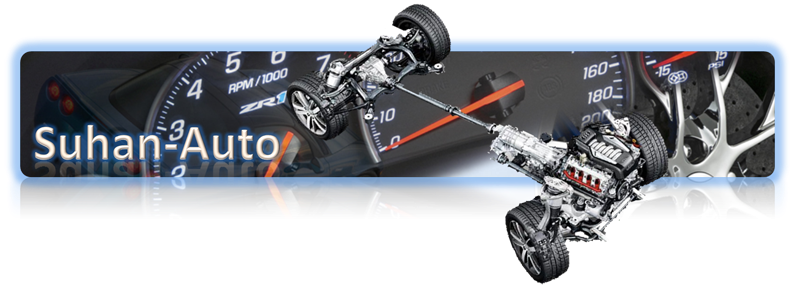A locked differential forces both left and right wheels on the same axle to rotate at the same speed under nearly all circumstances, without regard to tractional differences seen at either wheel. Therefore, each wheel can apply as much rotational force as the traction under it will allow, and the torques on each side-shaft will be unequal. (Unequal torque, equal rotational speeds).
A locked differential can provide a significant traction advantage over an open differential, but only when the traction under each wheel differs significantly.
All the above apply to central differentials as well as to those in each axle: full-time four-wheel-drive vehicles have three differentials, one in each axle, and a central one between the front and rear axles.
There are two main types of lockers: automatic and selectable.
Automatic lockers lock and unlock automatically with no direct input from the driver. Some automatic locking differential designs ensure that engine power is always transmitted to both wheels, regardless of traction conditions, and will "unlock" only when one wheel is required to spin faster than the other during cornering.
 HUMMER H3 Electronic Locking Rear Differential
HUMMER H3 Electronic Locking Rear Differential
IMG Ref: http://www.2405.com/press-library/Hummer-H3-2006/HUMMER-H3-Electronic-Locking-Rear-Differential.asp
Applications
Reference:
http://en.wikipedia.org
There are two main types of lockers: automatic and selectable.
Automatic lockers lock and unlock automatically with no direct input from the driver. Some automatic locking differential designs ensure that engine power is always transmitted to both wheels, regardless of traction conditions, and will "unlock" only when one wheel is required to spin faster than the other during cornering.
- Pros: Automatic action, no driver interaction necessary, no stopping for (dis-) engagement necessary
- Cons: Intensified tire wear, noticeable impact on driving behaviour (most people often tend to understeer)
- Pros: Allows the differential to perform as an "open" differential for improved driveability, maneuverability, provides full locking capability when it is desirable or needed
- Cons: Mechanically complex with more parts to fail. Some lockers require vehicle to stop for engagement. Needs human interaction and forward-thinking regarding upcoming terrain. Un-skilled drivers often put massive stress on driveline components when leaving the differential in locked operation on terrain not requiring a locker.
 HUMMER H3 Electronic Locking Rear Differential
HUMMER H3 Electronic Locking Rear DifferentialIMG Ref: http://www.2405.com/press-library/Hummer-H3-2006/HUMMER-H3-Electronic-Locking-Rear-Differential.asp
- Race cars often use locking differentials in order to maintain traction during high speed maneuvers or when accelerating at extreme rates.
- Some utility vehicles such as tow trucks, forklifts, tractors, and heavy equipment use locking differentials to maintain traction, especially when driving on soft, muddy, or uneven surfaces.
- Lockers are common in agricultural equipment and military trucks.
- Locking differentials are considered essential equipment for serious off-road driving Four-wheel drive vehicles.
- Differential locks are also used on some non-utility four-wheel-drive vehicles to compensate for a relative lack of axle articulation (vertical wheel movement).
- Used in the sport of drifting as an alternative to a limited slip differential.
Reference:
http://en.wikipedia.org



No comments:
Post a Comment